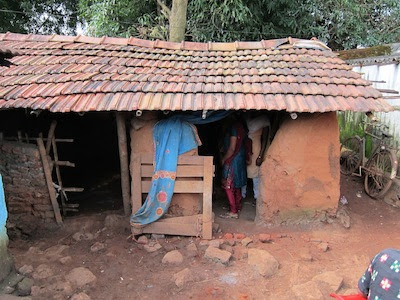Corey writes:
Last week my VSO Programme Manager, Praveen, came to visit Koraput. He was here to do my final review and to check up on the progress of the SAMADHAN project. He was also here to make a field visit and he asked me to come along. More about that later.
Praveen arrived on Thursday and we spent an hour catching up. We haven’t seen each other since June and he just returned from a month trip to Kenya and Canada. It was interesting talking to him about some of the differences between North America and India. Praveen is also very knowledgeable of development in India so I like to pick his brain about different topics.
One of the topics that has been debated in the press and government recently is the upcoming BPL survey. BPL stands for Below the Poverty Line. Basically the Indian government is responsible for surveying the population and identifying which households are BPL (poor). Once your household is identified as BPL you are then entitled to a number of social security plans, including subsidized rice, flour, and kerosene. If you are interested to learn more, you can check out the Wikipedia page.
There are many reasons why this is a hotly contested issue. Citizens and NGOs want to widen the social safety net and make sure that no one that is poor is left out. The government wants to limit the social safety net and maximize the tax revenues left over for investment in other areas like public works, education, defense, etc.
As a development professional, Praveen is concerned that the proposed criteria for the next survey will exclude many families with disabled people in them. He wanted to interview some families with disabled members living in Koraput and to find out the real costs associated with supporting a disabled family member in rural India. Towards that goal, we set out at 8am on Friday to Bandaguda, a village about 20 km from Koraput town.
We arrived at the village along with some staff from Ekta, another local VSO partner. Praveen and the Ekta staff sat down at the first households to interview the first family. It consisted of three members: a daughter, a mother, and a grandmother. Domni, the daughter has multiple disabilities and is totally dependent on a caretaker. In addition, the family’s earning ability is really curtailed without an adult male member. So the mother, 40, and the grandmother, 65, have to do manual labour to support the family. Every time Domni needs to go to the hospital, the mother and grandmother have to forgo a day of wages and spend about 600 rupees in transportation and medicine. They have spent around 10,000 rupees over the last ten years caring for Domni. But because there are non-disabled adult members of the family they are not considered BPL.
Next we went to another part of the same village and interview two more families. Both were in similar financial straits to Domni’s family. The first included Mitun, a young boy with multiple disabilities. His family is a little better off as his father can work and earns about 2000 rupees per month. However, the family took a loan of 10,000 rupees to pay for treatment for Mitun and are still repaying this loan. The last household has three brothers and a father, the mother recently died. Two of the brothers were disabled which meant that the third brother and the father had to forgo work or school to care for them. They have also taken on a loan of 20,000 rupees at 10% interest. These last two families are also not counted as poor under the latest iteration of the BPL criteria.
As always, I liked the chance to get out into the field and do some work. This will probably be my last time. I hope that Praveen is successful in his efforts to revise the BPL criteria so that these families and others like them will get some help.
Labels: Work










